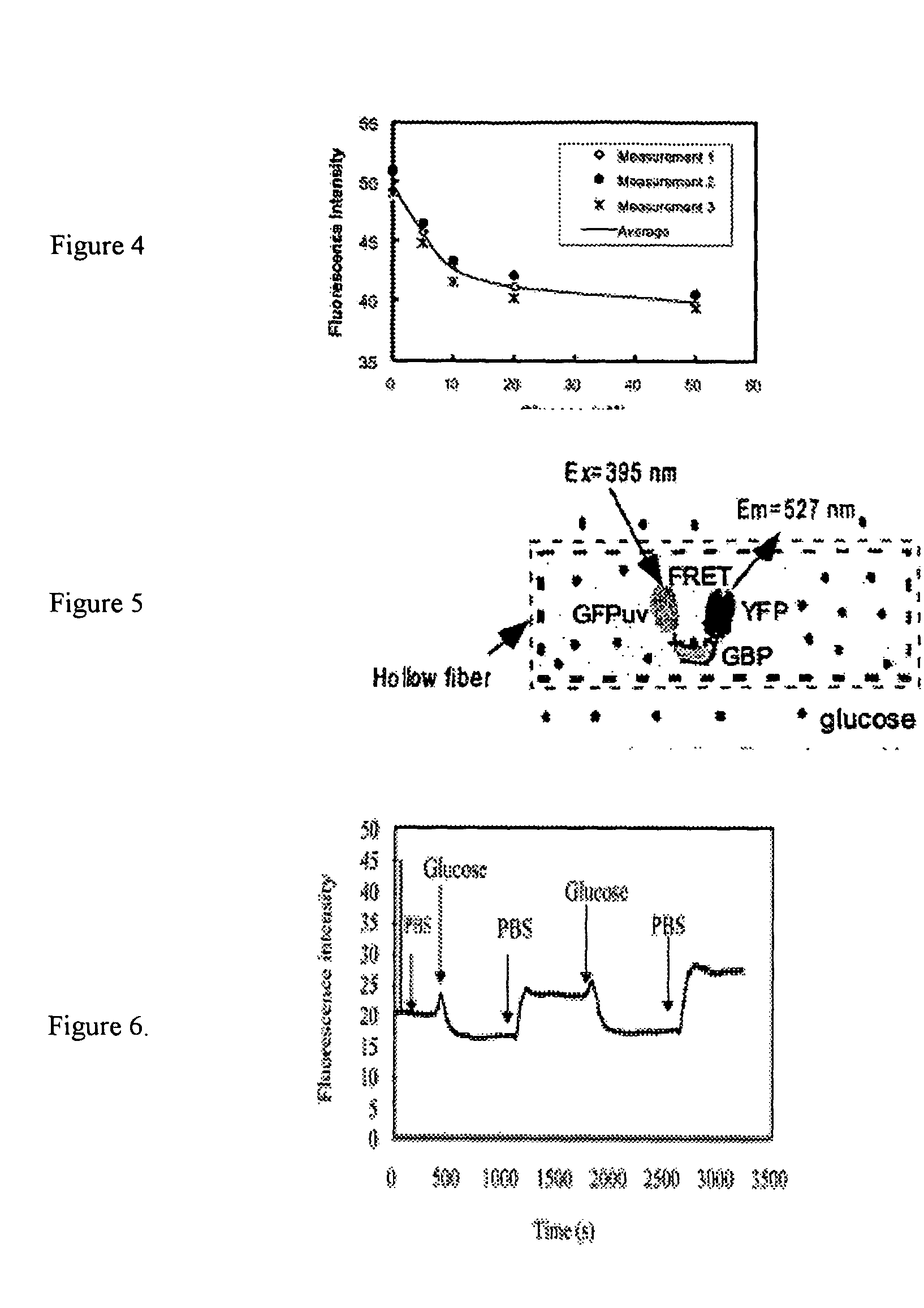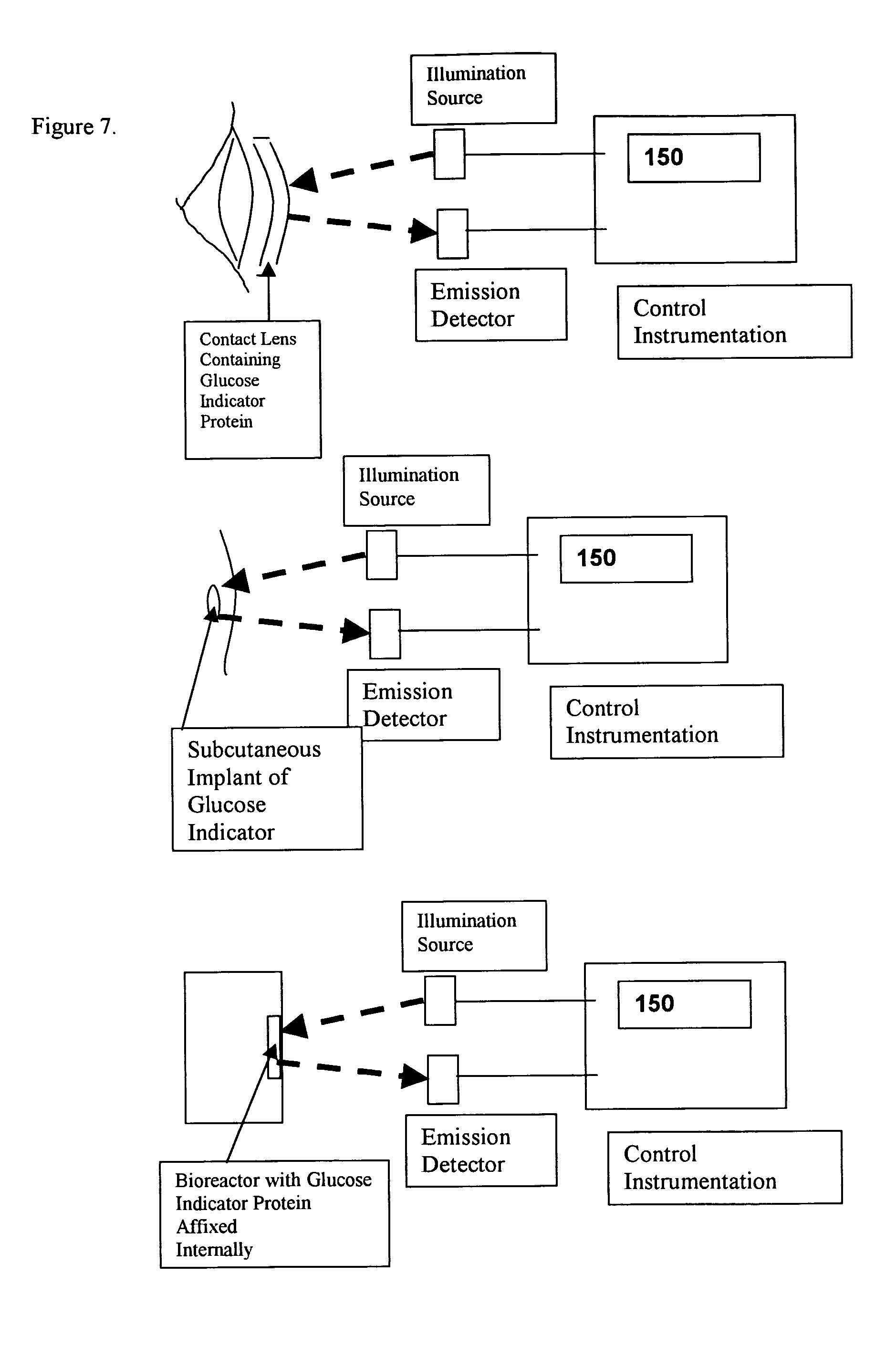System and method for detecting bioanalytes and method for producing a bioanalyte sensor
a bioanalyte and sensor technology, applied in the field of bioanalyte detection systems and bioanalyte sensors, can solve the problems of minimal invasiveness and no non-invasive method for blood glucose sensing presently available, and achieve the effect of preventing leaching
- Summary
- Abstract
- Description
- Claims
- Application Information
AI Technical Summary
Benefits of technology
Problems solved by technology
Method used
Image
Examples
Embodiment Construction
Method of Creating Indicator Fusion Protein
[0017] In one preferred embodiment of the present invention, to combine the brightness of fluorescent protein with the targeted molecular indicator, we use a green fluorescent protein isolated from the bioluminescent jelly Aeqorea Victoria (Shimomura, et al., 1962). The cloning of the wild type GFP gene and its subsequent expression in heterologous systems established GFP as a novel genetic reporter system (Prasher, et al. 1992; Chalfire, et al., 1994). Several GFP chromophore variants with shifted excitation and emission wavelengths have been developed by mutagenesis (Heim, et al., 1994; Cormack, et al., 1996), which can serve as donors and acceptors for fluorescence resonance energy transfer (FRET).
[0018] As an example of the general class of bioanalyte reporter proteins the present invention presents a new hybrid glucose binding protein that provides changes in fluorescence when glucose binds. This construct utilizes the conformationa...
PUM
 Login to View More
Login to View More Abstract
Description
Claims
Application Information
 Login to View More
Login to View More - R&D
- Intellectual Property
- Life Sciences
- Materials
- Tech Scout
- Unparalleled Data Quality
- Higher Quality Content
- 60% Fewer Hallucinations
Browse by: Latest US Patents, China's latest patents, Technical Efficacy Thesaurus, Application Domain, Technology Topic, Popular Technical Reports.
© 2025 PatSnap. All rights reserved.Legal|Privacy policy|Modern Slavery Act Transparency Statement|Sitemap|About US| Contact US: help@patsnap.com



